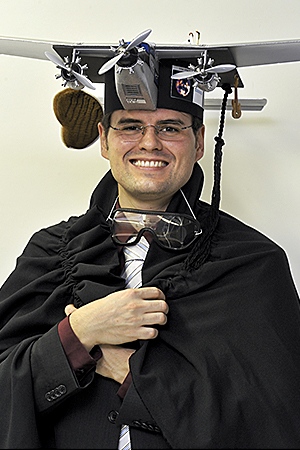Dieter Hahn
Statistical Medical Image Registration with Applications in Epilepsy Diagnosis and Shape-Based Segmentation
Abstract:
The advances in scanner technologies over the past years and a growing number of modalities in medical imaging result in an increased amount of patient data. The physicians are faced with an overwhelming amount of information when comparing different scans. Therefore, automatic image processing algorithms are necessary to facilitate everyday clinical workflows. The present work focuses on automatic, statistical image registration approaches and applications in epilepsy diagnosis and shape-based segmentation. Registration algorithms based on image intensity statistics are currently state-of-the-art to automatically compute an alignment between multi-modal images. The parameters, however, are sensitive to the input data. In the present work, we study the mutual influences of these parameters on the intensity statistics and present datadriven estimation schemes to optimize them with respect to the input images. This is necessary to register large sets of images both accurately and reliably. The presented evaluation results, which are based on a database with an established gold standard, confirm that individually optimized parameters lead to improved results compared to standard settings found in literature. Besides spatial accuracy, the reduction of the computation time for the registration is equally important. In this thesis, we present an approach to reduce the search space for the optimization of a rigid registration transform by a nonlinear projection scheme, which is closely related to the concept of marginalization of random variables. Within each projection, a disjoint subset of the transform parameters is optimized with greatly reduced computational complexity. With a good choice of the projection geometry, the search space can be separated into disjoint subsets. In the case of rigid 3-D image registrations, the nonlinear projection onto a cylinder surface allows for an optimization of the rotation around the cylinder axis and a translation along its direction without the need for a reprojection. Sub-volume registration problems are supported by fitting the projection geometry into the overlap domain of the input images. The required objective functions are constrained by systems of linear inequalities and solved by means of constrained, nonlinear optimization techniques. A statistical framework is proposed to measure the accuracy of the registration algorithms with respect to manual segmentation results. The aforementioned concepts of the data-driven density estimators are adopted for the estimation of spatial densities of the segmented labels in order to model the observer reliability. The accuracy of the spatial registration transform is measured between the estimated distributions of the segmented labels in both input images using the Kullback-Leibler divergence. The proposed algorithms are evaluated by a registration of a database of morphological and functional images with an established gold standard based on fiducial marker implants. Applications are presented for the subtraction of single emission computed tomography scans for epilepsy diagnosis, where the intensity distributions are estimated for both the task of the registration and the normalization of the images. Finally, the registration is utilized for shape-based image segmentation to establish a model for the variability within a collective of segmented training shapes.
